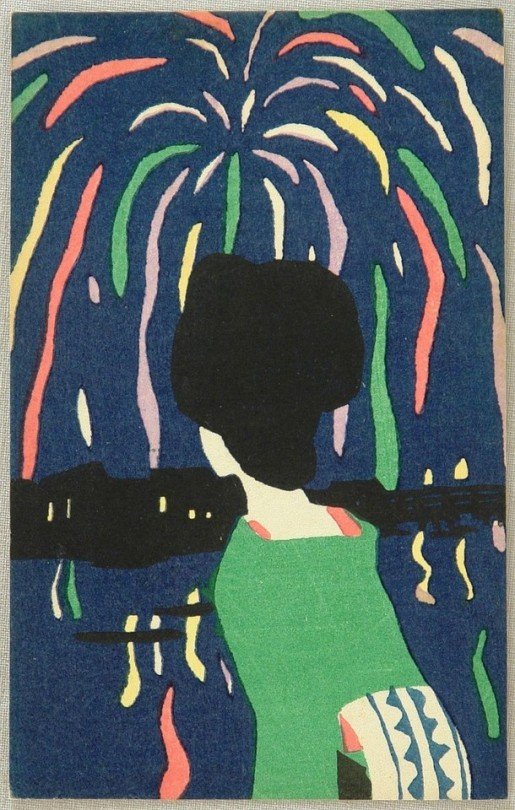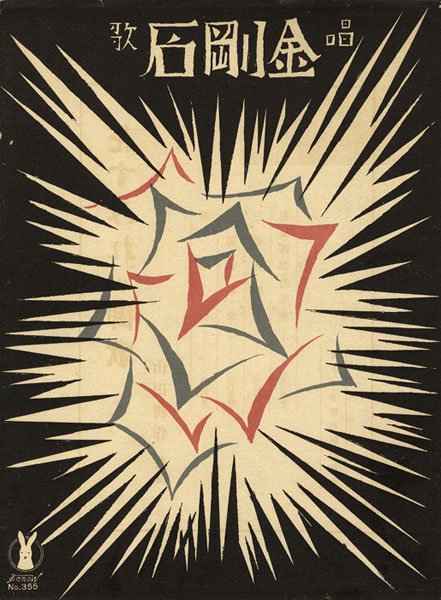TAKEHISA YUMEJI
Takehisa Yumeji (1884-1934) was a prolific artist, illustrator, printmaker and poet, whose work is highly cherished in his home country of Japan (there are no less than 6 museums dedicated to his work there), but is lesser known internationally.
He is most celebrated for his depictions of bijinga (‘beautiful women’). But beyond this he demonstrated a wide oeuvre of styles and a remarkable ability to marry the traditional craft of woodblock printing with international modernist influences. I am particularly taken with the way he captured pattern and textiles, bringing the scenes richly to life.
Camellia and Strawberry woodblock prints, date unknown.
Kuro Neko magazine cover, lithograph, 1929
Yumeji was a self taught artist who was led by feeling rather than formal training, saying: ’I do not care for skills that will make me draw better … I desire the richness from delicate sensual pleasures and feelings full of amazement.’
Struggling to make ends meet as a penniless young student in Tokyo, Yumeji decided to capitalise on his artwork - selling small illustrations on postcards, which earned him a meagre living. This early experience of illustrating for disposable print media stood him in good stead for the commercial design work that would set him apart from his contemporaries.
By 1910, Yumeji was turning out illustrations for magazines, newspapers and book covers, alongside his painting and poetry. But he wasn’t just a jobbing artist; he had become something of a public figure famed for his elegant and melancholy depictions of women, known as ‘Yumeji-style beauties’. Nozomi Naoi describes them as nothing short of a “social phenomenon inspiring women to seek out a ‘Yumeji-style’ look.” Many of Yumeji’s women have large eyes, modelled after his first wife Kishi Tamaki; a feature that played into a growing interest in Western beauty ideals in early 20th century Japan.
Above: two cover images for The Ladies' Graphic magazine, woodblock prints, 1926.
Yumeji and Tamaki opened the Minatoya Bookshop in 1914. The shop, located in Tokyo’s Nihonbashi district, sold Yumeji’s prints alongside goods such as decorated papers (chiyogami), handkerchiefs and wrapping cloths (furoshiki). Although the shop only lasted two years, it demonstrated his desire to bring his art into the lives of ordinary people.
As was tradition in Japanese printmaking, Yumeji (the designer) collaborated with skilled craftsmen (block-cutters and printers) but he was an exacting perfectionist over print quality. One printer he worked with regularly, Hirai Koichi, recalls that he “brought in old swatches of fabric, requesting that Hirai make colours similar to their faded or subtle shades”.
Top left: Fireworks (Hanabi), 1915. Top right: Music score cover published by Senow, lithograph, 1932.
Bottom left: Dancing, 1938. Bottom right: Music score cover published by Senow, lithograph, 1924.
I am particularly fond of his prints mass-produced using lithography, including a range of covers for sheet music published by Senow (pictured above). A more economical method than woodblock printing, lithography rendered his illustrations in a limited palette of bold flat colours, reminiscent of screen-printing.
After saving for several years, Yumeji embarked on a trip to California and Europe in 1931, continuing to hold exhibitions and teach art history throughout to help fund the journey onward. It was during this trip that Yumeji fell ill and shortly after his return died of tuberculosis, only just shy of his 50th birthday. It’s a great shame that he didn’t live to assimilate the Modernist aesthetics he would have surely soaked up in 1930s Europe. Nevertheless his appeal still endures today - his work is continually reprinted and can be seen on commercial goods worldwide.
Music score cover, published by Senow, lithograph, 1924.
Book cover for A collection of illustrated songs: Samisen leaves by Takehisa Yumeji, 1915
If you’re interested to see more of Takehisa Yumeji’s work, I recommend these books:












